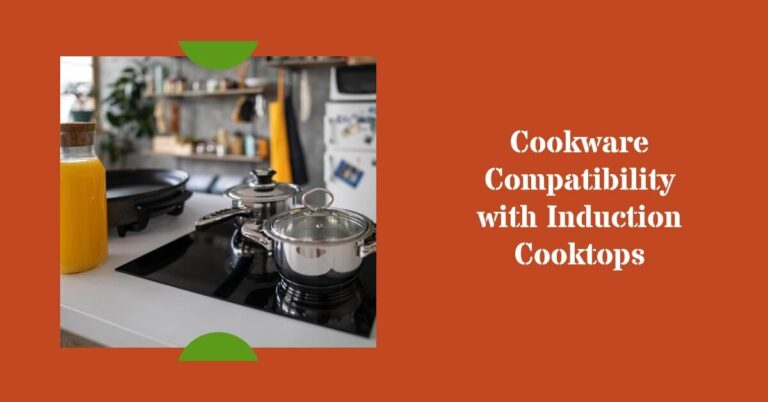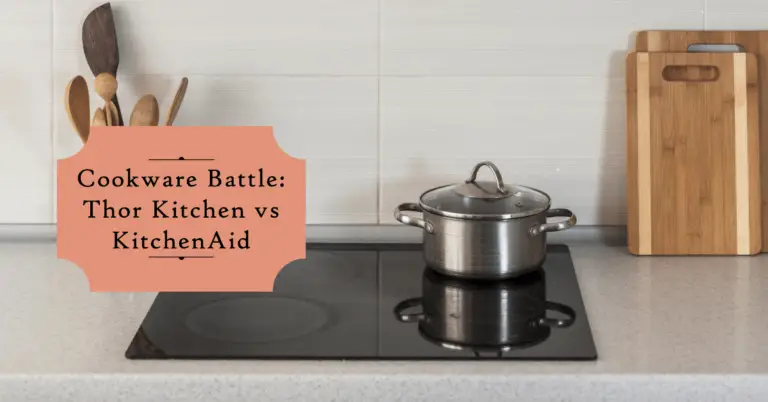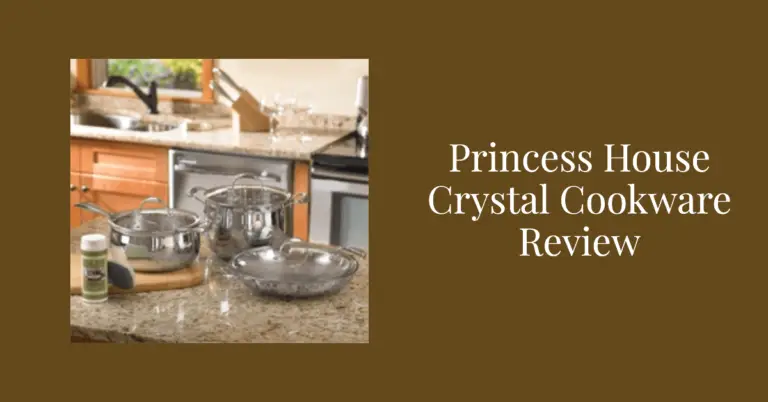Encapsulated Bottom Cookware Review By Experts
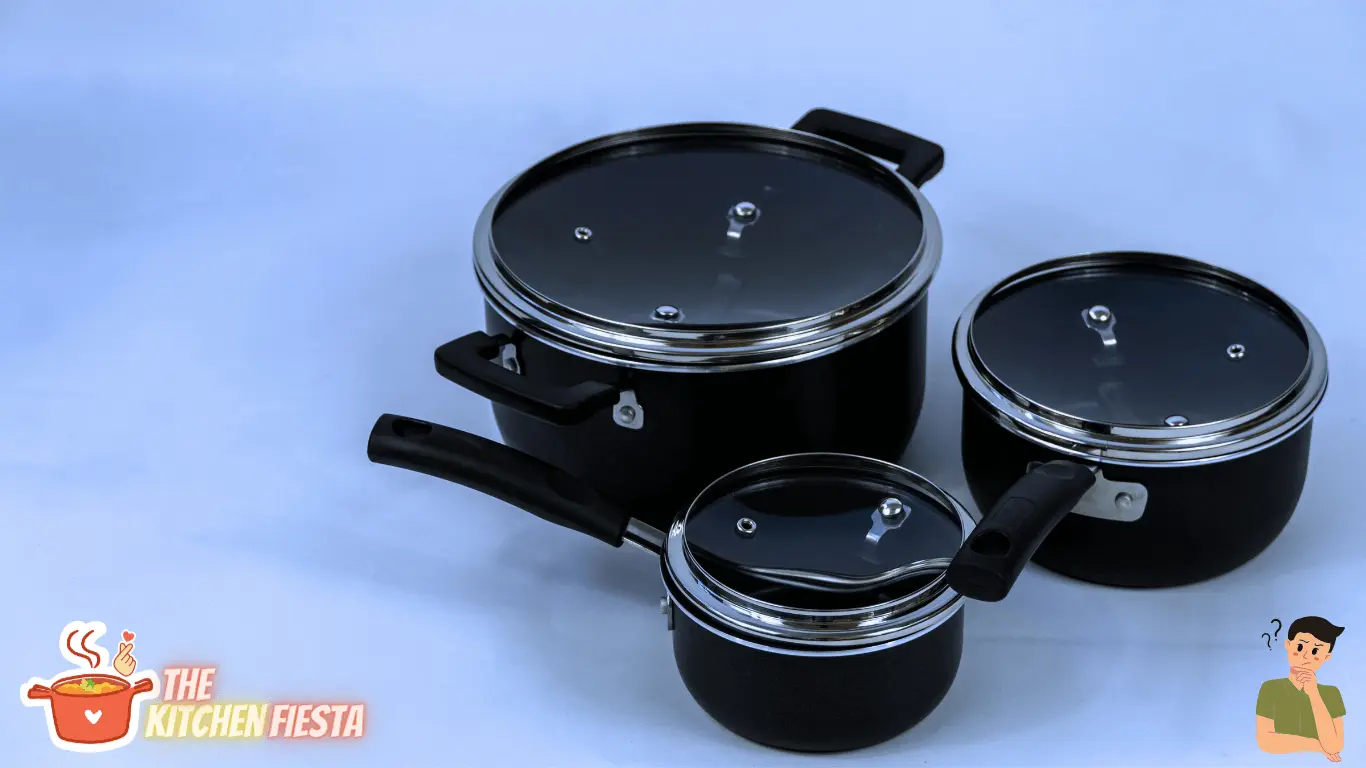
Encapsulated bottom cookware has become increasingly popular in recent years due to its ability to distribute heat evenly and prevent food from burning. The term “encapsulated” refers to a layer or disc of aluminum sandwiched between other steel or copper layers. This aluminum core helps to distribute heat evenly throughout the cookware, ensuring that food is cooked consistently and without hot spots.
The primary benefit of encapsulated bottom cookware is its ability to work on all stovetops, including induction. The thick encapsulated base with aluminum core ensures even heat distribution, facilitating faster cooking and preventing food from burning. Also, encapsulated bottom cookware is easy to clean and hygienic, making it a great choice for busy home cooks who want to prepare healthy meals without spending hours in the kitchen.
What is Encapsulated Bottom Cookware?
Encapsulated bottom cookware is a type of cookware that features a layer of aluminum or copper sandwiched between two layers of another material, such as stainless steel. This design allows for even heat distribution across the cooking surface and prevents hot spots from forming.
Encapsulated Bottom Cookware Meaning
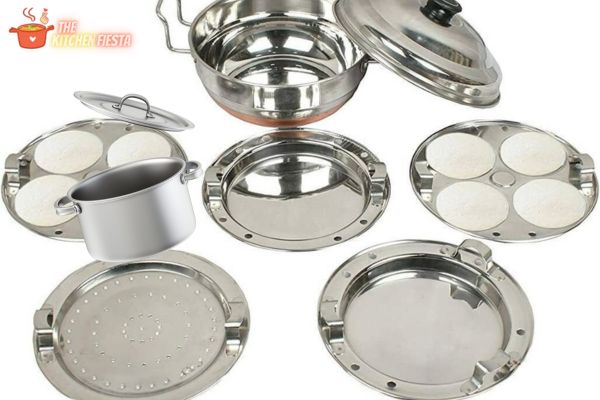
The term “encapsulated” refers to any component that is covered, encased, or enveloped by another material. In cookware, a layer or disc of aluminum or copper is covered with another material, such as stainless steel or copper.
Encapsulated bottom cookware is designed to provide even heating across the cooking surface. The layer of aluminum or copper in the cookware’s center helps distribute heat evenly, while the outer layers of stainless steel or copper provide durability and a non-reactive cooking surface.
Benefits of Encapsulated Bottom Cookware
Encapsulated bottom cookware is a type of cookware that has a layer of metal, usually aluminum, sandwiched between two layers of stainless steel. This design allows for better heat distribution and retention, making it a popular choice for many home cooks. Here are some of the benefits of encapsulated bottom cookware:
1. Heat Distribution
One of the main benefits of encapsulated bottom cookware is its ability to distribute heat evenly. The layer of aluminum in the cookware’s base helps to distribute heat quickly and evenly across the entire surface of the pan. This means food cooks more evenly, and fewer hot spots can cause burning or uneven cooking.
2. Durability
Encapsulated bottom cookware is also known for its durability. The stainless steel exterior is resistant to scratches and dents, making it a great choice for everyday use. Additionally, the aluminum core is strong and resistant to warping, which can be a problem with other types of cookware.
3. Compatibility with Induction Cooktops
Another advantage of encapsulated bottom cookware is that it is compatible with induction cooktops. Induction cooktops use magnetic fields to heat the cookware directly rather than heating the stovetop surface. Encapsulated bottom cookware is designed with a layer of magnetic stainless steel in the base, which allows it to be used on induction cooktops.
In summary, encapsulated bottom cookware offers several benefits, including even heat distribution, durability, and compatibility with induction cooktops. These features make it a popular choice for many home cooks who want high-quality cookware that lasts years.
Disadvantages of Encapsulated Bottom Cookware
While encapsulated bottom cookware offers several advantages, there are also some disadvantages to consider:
1. Weight
Encapsulated bottom cookware is generally heavier than regular cookware due to the added layers of aluminum and steel. This can make it difficult to handle and maneuver, especially for those with weaker wrists or hands.
2. Price
Encapsulated bottom cookware can be more expensive than regular cookware due to the added layers of materials and manufacturing processes. While the cost may be worth it for some, it may not be feasible for those on a tight budget.
3. Durability
While encapsulated bottom cookware is generally durable, it may not last as long as other types of cookware. The layers of materials can separate over time, leading to warping or other damage. Additionally, suppose the cookware is not cared for properly. In that case, it may scratch or dent more easily than other cookware.
4. Heat Distribution
While encapsulated bottom cookware is designed to distribute heat evenly, it may not do so as effectively as other types of cookware. The added layers of materials can create hot spots or uneven heating, leading to burnt or undercooked food.
Types of Encapsulated Bottom Cookware
Encapsulated bottom cookware is popular among home cooks and professional chefs. This type of cookware is designed with aluminum sandwiched between two layers of stainless steel or another material. The aluminum core helps to distribute heat evenly across the surface of the cookware, while the outer layer provides durability and resistance to scratches and stains.
Stainless Steel Encapsulated Bottom Cookware
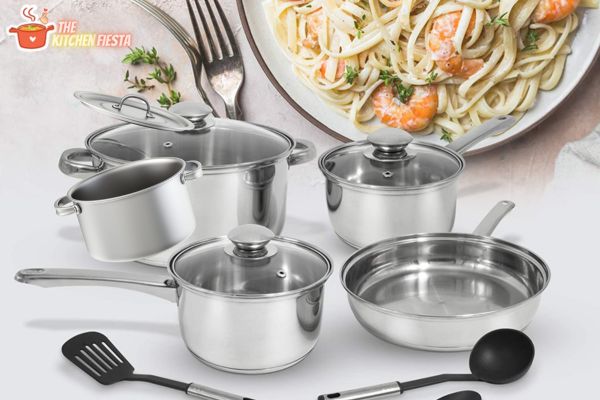
Stainless steel encapsulated bottom cookware is a great option for those wanting a durable and long-lasting set. Stainless steel is known for its resistance to rust, corrosion, and staining, making it ideal for use in the kitchen. The encapsulated bottom design ensures that heat is distributed evenly across the cookware’s surface, which helps prevent hot spots and burning.
One of the main benefits of stainless steel encapsulated bottom cookware is that it can be used on all stovetops, including induction. This cookware is also dishwasher safe, making it easy to clean and maintain.
Aluminum Encapsulated Bottom Cookware
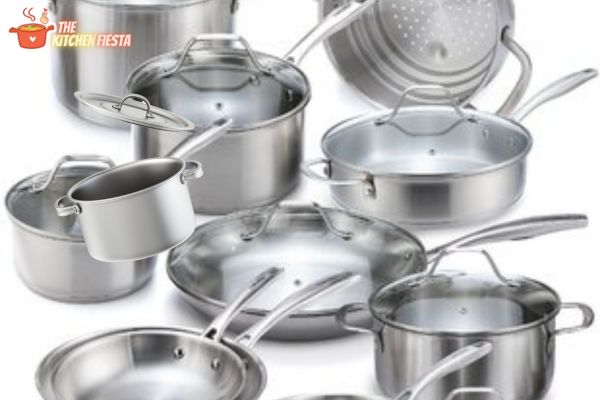
Aluminum-encapsulated bottom cookware is another popular option for home cooks and professional chefs. Aluminum is a great conductor of heat, meaning it heats up quickly and distributes heat evenly across the cookware’s surface.
The encapsulated bottom design ensures that the aluminum core is protected by a layer of stainless steel or another material, which helps to prevent scratches and dents. Aluminum encapsulated bottom cookware is also lightweight and easy to handle, which makes it a great choice for those who cook frequently.
One thing to remember when using aluminum encapsulated bottom cookware is that it is not compatible with induction stovetops. It is also important to avoid using metal utensils when cooking with this type of cookware, as they can scratch the surface and damage the encapsulated bottom design.
How to Choose the Right Encapsulated Bottom Cookware?
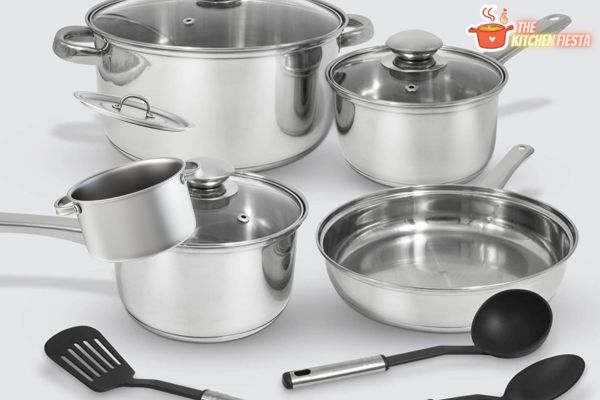
When it comes to choosing the right encapsulated bottom cookware, there are several factors that one should consider. This section will briefly overview the most important factors to consider when choosing the right encapsulated bottom cookware.
1. Size and Capacity
When selecting encapsulated bottom cookware, it’s crucial to consider the size and capacity of the cookware. Opting for the appropriate size is essential, depending on your cooking requirements. For instance, if you cook for a large family, you’ll need bigger cookware, whereas smaller families can suffice with smaller cookware. Additionally, it’s essential to factor in the capacity of the cookware. If you plan to cook for a sizable group or entertain guests, you’ll require cookware with a more extensive capacity.
2. Type of Cooktop
Another important factor to consider when choosing encapsulated bottom cookware is your type of cooktop. Encapsulated bottom cookware is designed to work with various cooktops, including gas, electric, and induction cooktops. Make sure your cookware is designed to work with your particular cooktop.
3. Price
Price is another factor to consider when choosing encapsulated bottom cookware. Encapsulated bottom cookware can range in price from very affordable to very expensive. Choose cookware within your budget while still providing the quality and features you need.
4. Brand
Considering the brand is an essential factor when choosing cookware. When choosing cookware, ensure the brand is known for producing high-quality products. Some of the most popular brands of encapsulated bottom cookware include All-Clad, Cuisinart, and Calphalon.
5. Cooking Surface
Another important factor to consider when choosing encapsulated bottom cookware is the cooking surface. Stainless steel is a popular choice for cookware because it’s durable and easy to clean. However, some prefer non-stick surfaces because they are easier to cook with and require less oil. You should consider your personal preference and cooking style when choosing cookware.
6. Lid
The lid is an important part of cookware because it helps to trap heat and moisture. When choosing encapsulated bottom cookware, it’s important to choose a lid that fits snugly and is made of a heat-resistant material. Glass lids are popular because they allow you to see the food as it cooks. Still, metal lids are also a good choice because they are more durable.
7. Handles and Knobs
The handles and knobs on cookware are important because they allow you to move the cookware safely and easily. When choosing encapsulated bottom cookware, choose handles and knobs that are heat-resistant and comfortable to grip. Some cookware has removable handles, which can be convenient for storage and cleaning.
Checkout Our Other Cookware Guides
Encapsulated Bottom Cookware Customers Reviews
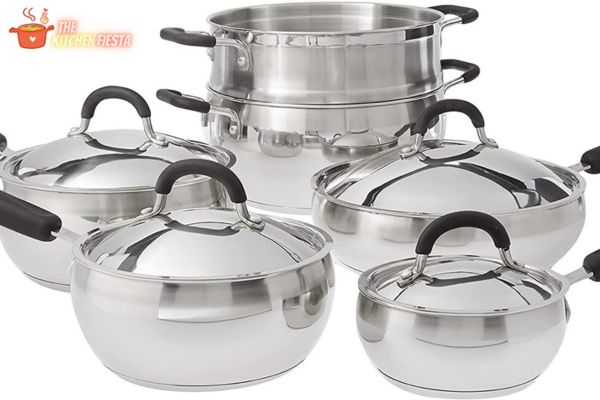
Encapsulated bottom cookware has been gaining popularity among home cooks and professional chefs. This type of cookware is known for its enhanced cooking performance, even heat distribution, and improved heat retention. But what do customers think about it? Let’s take a look at some of the reviews.
One customer who purchased the Cook N Home 10-Piece Stainless Cookware Set with Encapsulated Bottom from Amazon.com said, “I love this cookware set! The encapsulated bottom heats up quickly and evenly, and the pots and pans are easy to clean. I also appreciate that the set includes a variety of sizes and shapes for different cooking needs.”
Another customer who bought an 8 Quart 18/10 Stainless Steel 4 Piece Multi-Cookware Set with Encapsulated Base from Amazon.com wrote, “This set is amazing! The encapsulated base ensures no hot spots, and the pots and pans are sturdy and well-made. I’ve used them for everything from boiling pasta to making soups and stews, and they’ve held up beautifully.”
According to customers, encapsulated bottom cookware is also great for delicate sauces. One reviewer on The Spruce Eats website said, “I’ve been using an encapsulated bottom saucepan for a few months now, and I’m impressed with how evenly it heats up. I’ve had no issues with scorching spots, even when making delicate sauces like hollandaise.”
In addition, fully clad cookware, which features encapsulated bottoms, is highly recommended by America’s Test Kitchen. They state that fully clad cookware “provides the best combination of heat distribution, heat retention, and responsiveness for cooking.”
Is Encapsulated Aluminum Cookware Safe?

Encapsulated aluminum cookware is a popular choice for many home cooks due to its even heat distribution and durability. However, some people are concerned about the safety of cooking with aluminum, especially when it is encapsulated in other materials such as stainless steel or copper.
Aluminum is a lightweight metal that conducts heat rapidly, making it a popular choice for cookware. However, some studies have suggested that aluminum may leach into food during cooking, particularly with acidic ingredients. While the evidence for this is not conclusive, it has raised concerns about the safety of using aluminum cookware.
Encapsulated aluminum cookware addresses these concerns by sandwiching the aluminum core between layers of other materials, such as stainless steel or copper. This prevents direct contact between the aluminum and the food, reducing the risk of aluminum leaching into the food.
In addition to reducing the risk of aluminum leaching, encapsulated aluminum cookware has other benefits. For example, encapsulation increases the cookware’s durability, making it less prone to warping or denting. It also improves the cookware’s performance by providing even heat distribution across the entire surface of the pan.
Care and Maintenance of Encapsulated Bottom Cookware
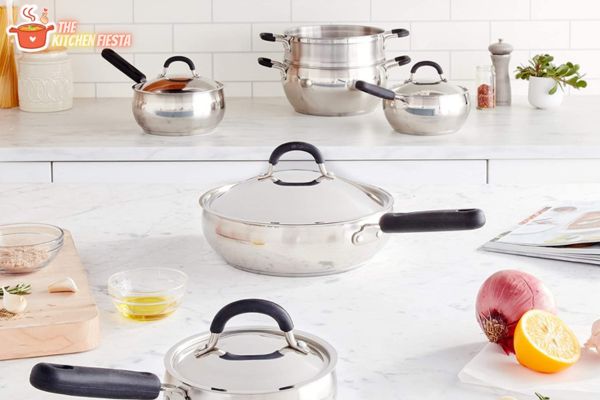
Encapsulated bottom cookware is a popular choice for many home cooks because of its enhanced cooking performance, even heat distribution, and improved heat retention. To ensure that your cookware lasts for years to come, it is important to take proper care of it. Here are some tips for storing and cleaning your encapsulated bottom cookware.
Storage Tips
Protect the encapsulated bottom from scratches and other damage when storing your cookware. Here are some tips for storing your cookware:
- Store your cookware in a cool, dry place.
- Use pot protectors or soft cloths to separate your cookware when stacking it.
- Avoid stacking heavy items on top of your cookware.
- Do not store your cookware with the lids on; this can trap moisture and cause rusting.
Cleaning Tips
Proper cleaning is essential to maintain the performance and appearance of your cookware. Here are some tips for cleaning your encapsulated bottom cookware:
- Allow your cookware to cool before cleaning it.
- Use a soft sponge or cloth to clean your cookware. Avoid using abrasive cleaners or steel wool, as these can scratch the cookware’s surface.
- Use a mild dishwashing detergent and warm water to clean your cookware.
- For stubborn stains or burnt-on food, soak your cookware in warm, soapy water for a few hours before cleaning it.
- Avoid using bleach or other harsh chemicals on your cookware, as these can damage the cookware’s surface.
- To remove discoloration or stains from the bottom of your cookware, use baking soda and water. Apply the mixture to the bottom of the cookware and let it sit for a few minutes before rinsing it off.
Conclusion
Encapsulated bottom cookware is an excellent choice for those who want even heat distribution and want to avoid hot spots in their cooking. The aluminum or stainless steel layer at the base of the cookware helps to distribute heat evenly, which results in perfectly cooked food every time.
While there are some downsides to encapsulated bottom cookware, such as the added weight and the higher cost compared to other cookware, the benefits far outweigh the negatives. The even heat distribution and prevention of hot spots make cooking with encapsulated bottom cookware a breeze.
It’s important to note that not all encapsulated bottom cookware is created equal. The number of layers and the materials used can vary from brand to brand, so research before purchasing. Look for cookware with a thicker base and higher-quality materials for the best results.
Overall, encapsulated bottom cookware is an excellent investment for those who want to take their cooking to the next level. With its even heat distribution and prevention of hot spots, you’ll be able to cook your favorite dishes to perfection every time.
FAQs
What is encapsulated bottom cookware?
Encapsulated bottom cookware is a type of cookware that features a layer of aluminum sandwiched between two layers of another material, such as stainless steel or copper. This layer of aluminum helps to distribute heat evenly across the bottom of the pan.
How is encapsulated bottom cookware made?
Two main methods for making encapsulated bottom cookware are high-temperature soldering and diffusion welding. High-temperature soldering involves heating the metal layers until they melt and fuse, while diffusion welding involves using pressure and heat to bond the metal layers.
What are the advantages of encapsulated bottom cookware?
Encapsulated bottom cookware has several advantages over traditional cookware. The layer of aluminum in the bottom of the pan helps to distribute heat evenly, preventing hot spots and ensuring that food cooks evenly. Additionally, encapsulated bottom cookware is often more durable and longer-lasting than other types of cookware.
How do you care for encapsulated bottom cookware?
To care for encapsulated bottom cookware, avoid using metal utensils and abrasive cleaners. Use non-abrasive cleaners and wooden or plastic utensils instead. Also, don’t heat the pan without food or liquid to prevent the warping of the aluminum layer.

